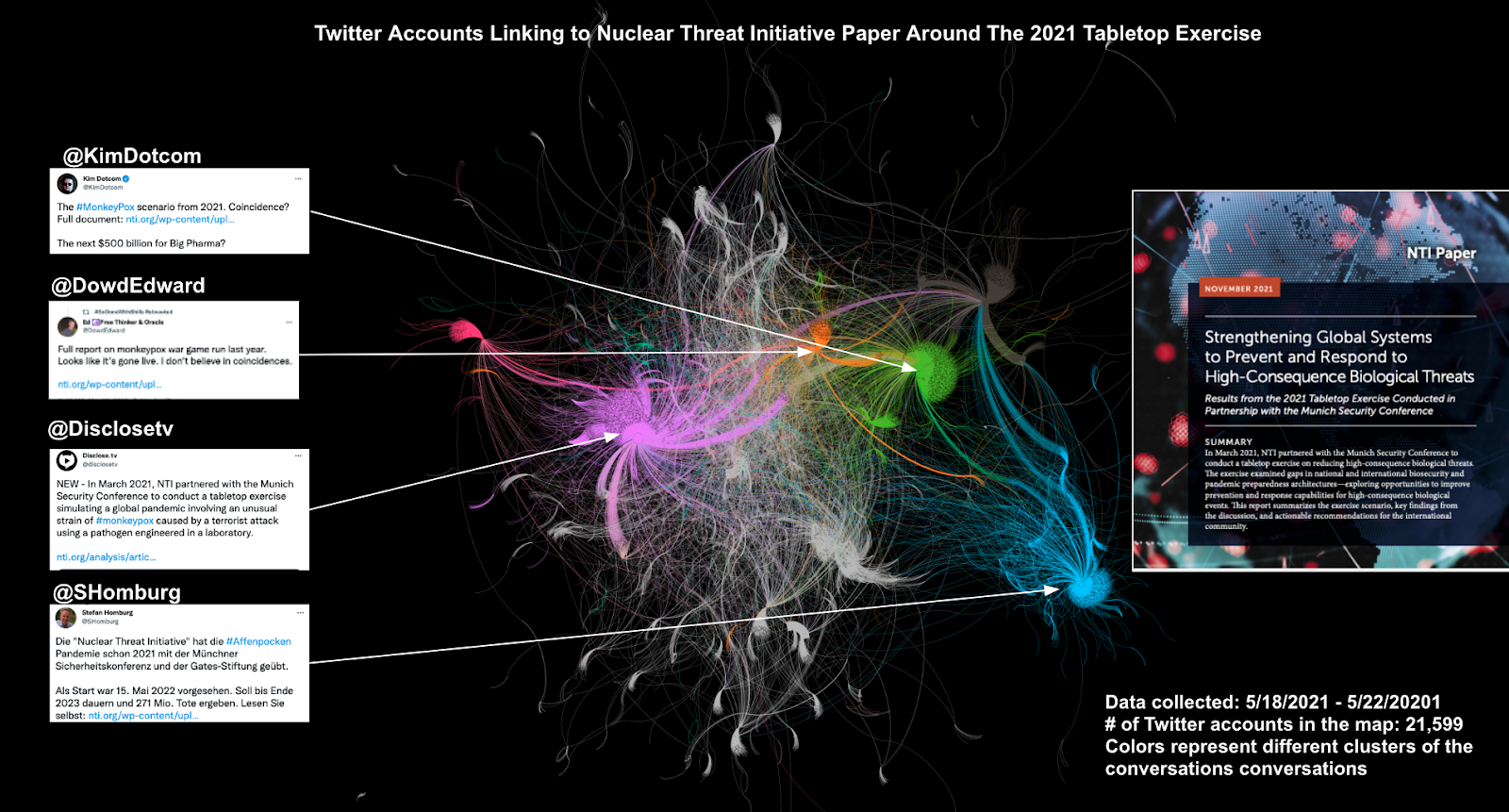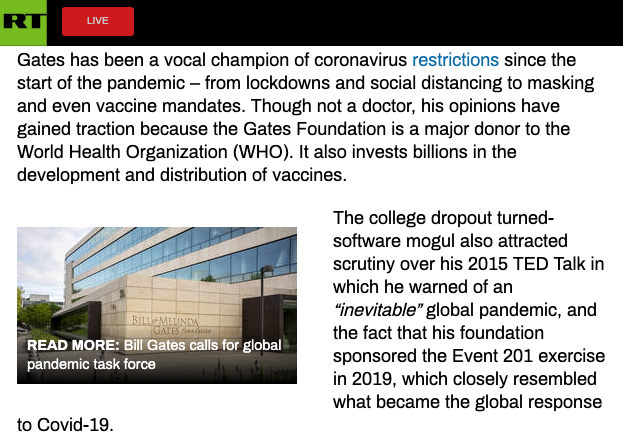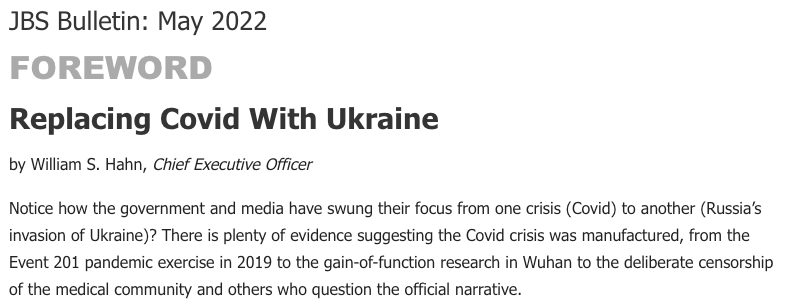‘The Next Pandemic’: Recycled Conspiracies Spread Rapidly Amid Monkeypox Outbreak
Adi Cohen, Benjamin T. Decker / May 26, 2022The global impact of the current outbreak of Monkeypox remains unclear, but the online conversation around it reveals the challenge of distrust in scientific and public health institutions, and how this sentiment is used to gain influence on social media through dissemination of conspiracy theories and rumors.
Over the past week there has been a spike in Monkeypox-related conspiracy content across both mainstream and fringe social media platforms. For disinformation researchers and journalists, it should be no surprise that these conspiracies use the same narrative playbook as past anti-vaccine campaigns, claiming that the World Health Organization (WHO), Bill Gates, Dr. Anthony Fauci, the World Economic Forum and a range of international organizations are all collaborating secretly to drive panic within the public, profit off of the pandemic, and achieve “population control.”
The targets and tactics bear a notable similarity to the tactics employed to sow distrust in the months leading up to and including the global COVID-19 pandemic lockdowns that took place in early 2020.
The Same Playbook All Over Again
As first reports about Monkeypox cases in Europe emerged, conspiratorial references to Bill Gates and forced vaccination campaigns immediately followed, but the conversation started to gain more steam last week. On May 19th, shares of links to a report published by a U.S. based NGO that conducted a tabletop Exercise simulating a Monkeypox outbreak in March 2021, popped on Twitter, 4Chan, Reddit, Telegram and Facebook. The simulation focused on a Monkeypox outbreak that, according to the exercise, would take place in 2022. On YouTube, videos blaming Bill Gates for the outbreak gained hundreds of thousands of views. On TikTok, a video segment depicting Bill Gates as the responsible for the outbreak gained almost 300,000 views within one weekend.
The amplification of the 2021 NTI Monkeypox simulation for the purpose of highlighting a conspiratorial narrative at an early stage of the outbreak resembles the fixation of conspiracy theorists and anti vaxxers on Event 201, a simulation exercise of a pandemic modeling that took place in Oct. 2019. Conspiratorial mentions of that simulation surfaced on social media in January 2020, as the COVID-19 virus was first identified outside of China. Then, in 2021, the second part of “Plandemic”-- a documentary style movie viewed by millions– highlighted Event 201 to make more conspiratorial claims.
This time around, most of the popular posts promoting Monkeypox conspiracies included references to the NTI simulation event - “Strengthening Global Systems to Prevent and Respond to High-Consequence Biological Threats”. The event included an “exercise scenario” that “portrayed a deadly, global pandemic involving an unusual strain of monkeypox virus that emerged in the fictional nation of Brinia and spread globally over 18 months.”
As of May 23, links to the paper and website that describe the event have been circulated over 30,000 times on main and fringe social media platforms:
- They were shared as proof that the current outbreak of Monkeypox has been planned by international organizations and the Gates Foundation, to push for a vaccination campaign that would be followed.
- Similarly to Event 201, the main amplification of the content included Russian State media outlet RT, which published conspiratorial posts about the event on its accounts.
- Other “Blue check” accounts on Twitter also posted a link, often just to point out the coincidence, while allowing readers to draw conclusions or “do their own research.”
- On May 23, Glenn Beck emphasized the NTI Tabletop Exercise in his show, gaining over 120,000 views on YouTube and 50,000 views on Facebook. Similarly, In 2020, Glenn Beck dedicated a segment to Event 201, posting it to Facebook with the abbreviation NWO (New World Order).

The scientific papers and public health hubs
Websites of public health authorities and repositories of scientific papers are an essential source for conspiracy theorists, as they allow cherry picking of facts and provide essential content in shaping the narrative. Over the weekend archived versions of the NHS Monkeypox websites were shared in a viral Telegram message to prove that authorities have changed the text, in a way that would justify harsh measures by the government such as lockdowns. Similar to the events that unfolded in the early days of the COVID-19 pandemic, some Monkeypox conspiracy theories are now pushing conspiracies around old scientific papers that were taken out of context, questioning use of small-pox vaccines, though authorities all over the world have not made any recommendations about vaccination, let alone initiated vaccination campaigns.
Misinformation around LGBTQ communities
The fact that a currently known location of the spread of Monkeypox was at a Pride event in Europe led conspiracy theorists to make comparisons to the AIDS epidemic, and false arguments about its early spread. Public health authorities have warned about misinformation around this particular topic, as false claims accrue on social media suggesting that the disease spreads only through gay sex or open wounds, hence other people don’t need to worry.
Convergence of Antivax and Russian State-Sponsored Content on Fringe Platforms
Russia’s propaganda efforts have become increasingly contained by stricter enforcement of main social media platforms, but amid convergence of far-right, antivax and Russian propaganda narratives about Monkeypox, there are signs of collaboration. On May 24, Global Research– a website described by the U.S. State Department as a Russian proxy– featured an article published on Robert Kennedy Jr.’s website that repeated claims about a link between the NTI simulation and the outbreak. Articles by well known antivaxxers, such as Joseph Mercola, who was banned from Facebook, Instagram and YouTube over the past two years, are now featured regularly on the site. The far-right John Birch Society, whose recent May 2022 bulletin echoes Russian propaganda about Covid-19, Event 201, and the Russian invasion of Ukraine, is the perfect example of this in practice.
Russia’s official outlets, while restricted on Facebook, YouTube, and by cable and streaming providers in the U.S. and the E.U., are gaining tens of thousands of followers on Gab, Rumble, and Odysee, where they have a combined audience of over 150,000 followers across the two fringe platforms. Many of these accounts were created in 2021, and began to experience an increase in viewership after the launch of the full-scale Russian invasion of Ukraine in February 2022.


An excerpt from the May 2022 bulletin of the far-right John Birch Society
This case study provides a way to assess the vulnerabilities that remain in our information ecosystem, particularly those most often exploited by conspiracy theorists:
1. Ecosystem built for pre-made content: the social media ecosystem is primed to receive an injection of new, often pre-made narratives, allowing conspiracy theorists to quickly adapt to new developments while recycling the main talking points. Exercises by public health and security organizations are portrayed as the planning of bioweapons attack, legitimate scientific papers are taken out of context, and information shared by public health authorities is targeted. This recurring pattern, calls for an assessment of how the concept of pre-bunking could be applied to minimize the damages.
2. Just asking questions: once again, the conspiracy narratives that perform best are built around true events or cherry picked factual pieces of content, from which conspiracy theorists extrapolate, or they request that their audiences take actiont. In the event that platforms such as Facebook or Twitter might add fact-checking cards alongside false Monkeypox posts, as they did with COVID-19, may or may not simply be dismissed by the content authors as evidence of bias or as an attempt to silence them.
3. Access through 3rd party and new influencers: mainstream platforms have banned many of the antivax influencers identified in the COVID-19 context from having direct access to their platforms. However, those influencers are now gaining access to audiences through sites such as BitChute and Rumble. On TikTok, clips of conspiracy theorists such as Alex Jones are edited and uploaded to the platform by other users.
- - -
Social media platforms have taken multiple steps since January 2020 to limit the spread of vaccine conspiracy theories. Yet, with only a week into the public dialogue about a potential global disease outbreak, the same conspiratorial narratives are amplified in the same ways in a never ending game of whack-a-mole that we all know too well.
The volume for now is relatively low, though that may be partially explained by the fact that public health experts have, for now, described the severity of the threat of human-to-human transmission to be relatively low. However, regardless of the severity of the current outbreak, tackling those narratives as soon as possible is a critical step which public health organizations and social media platforms should take now to prevent more severe damage to the public’s understanding of the risks later on.
Authors

